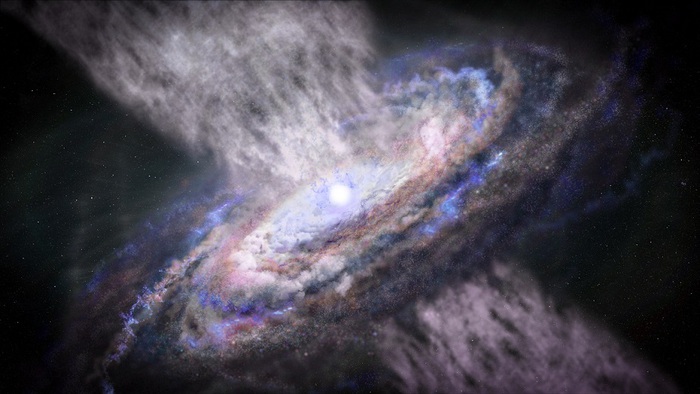For the first time, gamma rays produced in the powerful winds of gas and particles emitted by supermassive black holes at the center of galaxies have been identified. The discovery, the result of observations by NASA's Fermi orbiting telescope, will allow us to better understand the evolutionary history of galaxies, including ours. The results are published in The Astrophysical Journal by an international team led by Chris Karwin of Clemson University (USA): the participation of Italian researchers is important, including some from the National Institute of Astrophysics (INAF), the National Institute of Nuclear Physics (INFN) and the Italian Space Agency (ASI).
The study was in fact carried out thanks to the data collected by LAT (Large Area Telescope), an instrument on board Fermi designed and built with a decisive contribution from Italy, thanks to ASI, INFN and INAF.
"While these winds are difficult to detect, they are thought to play a significant role in how a massive black hole and the host galaxy itself interact and grow," says Stefano Marchesi, an INAF researcher in Bologna. gamma associated with these ejections show how supermassive black holes can transfer a large amount of energy to their host galaxy. " These winds, called UFOs ('Ultra Fast Outflows', or 'ultra-fast ejections'), "behave like a piston and very efficiently accelerate charged particles, known as cosmic rays, to nearly the speed of light."
The study will help reconstruct the history of the Milky Way and its black hole Sagittarius A *, which has a mass equal to four million times that of the Sun. Above and below the Milky Way's disk, bubbles of Stationary, huge spheroidal structures of hot gas that originate in the galactic center.
"Sagittarius A * is not active today, but it probably was in the recent past, perhaps even a few hundred years ago," Karwin comments.
"Our model supports the hypothesis that these Fermi bubbles may be remnants of past UFO-like activity."

